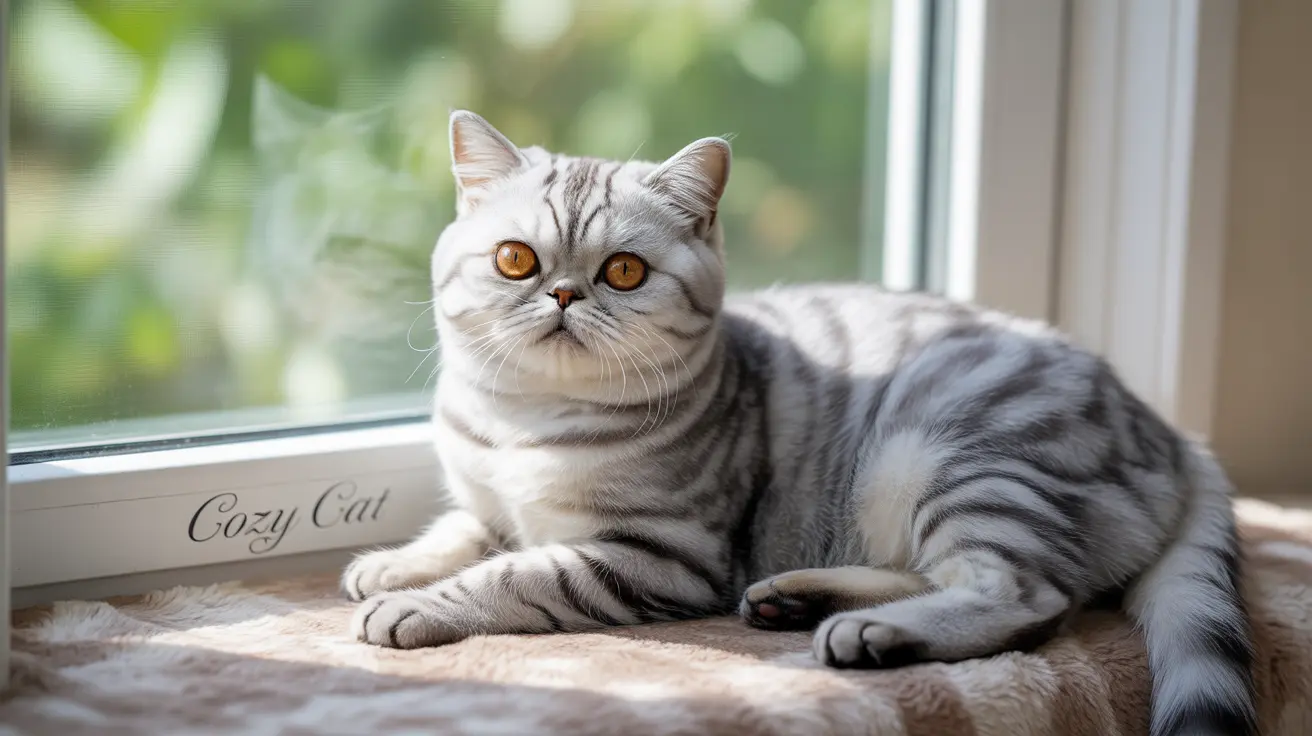Exotic Shorthair cats are beloved for their distinctive teddy bear appearance and impressive range of coat colors and patterns. These charming felines showcase one of the most diverse color palettes in the cat world, inherited from their Persian ancestors while maintaining their signature plush, short coat.
In this comprehensive guide, we'll explore the fascinating world of Exotic Shorthair colors, from classic solid shades to intricate patterns, helping you understand the unique characteristics that make each variety special.
Understanding Solid Color Varieties
Solid-colored Exotic Shorthairs display a single, uniform color throughout their coat. The most common solid colors include:
- White (with copper or blue eyes)
- Black (with copper eyes)
- Blue (a dilute form of black)
- Red (also known as orange)
- Cream
- Chocolate
- Lilac
Each solid color comes with specific eye color requirements for show cats, typically featuring brilliant copper eyes, except for whites which may have blue or odd-colored eyes.
Stunning Pattern Variations
Tabby Patterns
Tabby patterns are among the most recognizable in Exotic Shorthairs, featuring distinct markings that come in several varieties:
- Classic tabby (swirled patterns)
- Mackerel tabby (striped patterns)
- Spotted tabby
- Ticked tabby
Parti-Colors and Calicos
These striking combinations feature two or more colors in distinct patches:
- Tortoiseshell (black and red)
- Blue-cream
- Calico (white with patches of black and red)
- Bi-color (any color with white)
The Distinctive Pointed Pattern
Pointed Exotic Shorthairs, also known as Himalayan-patterned, show darker coloring on their faces, ears, legs, and tails, while their bodies remain lighter. Common point colors include:
- Seal point
- Blue point
- Chocolate point
- Lilac point
- Flame point
Silver and Golden Division
These cats display some of the most striking coat appearances in the breed:
- Chinchilla silver
- Shaded silver
- Chinchilla golden
- Shaded golden
Care and Maintenance
While Exotic Shorthairs require less grooming than their Persian cousins, regular maintenance helps keep their coats looking their best:
- Weekly brushing to remove loose fur
- Regular eye cleaning, especially for light-colored cats
- Occasional baths to maintain coat texture
- Special attention during seasonal shedding periods
Frequently Asked Questions
What are the most common colors and patterns found in Exotic Shorthair cats?
The most common colors include solid black, white, blue, and red, while popular patterns include tabby, tortoiseshell, and pointed varieties. Solid colors and classic tabby patterns are particularly prevalent in the breed.
How do I determine the color division of my Exotic Shorthair cat?
Look at your cat's overall coat appearance, including base color and any patterns. Check the color of their eyes, nose leather, and paw pads, as these can help identify specific color divisions. For accurate identification, consult a breed expert or veterinarian.
What are the care and grooming needs for an Exotic Shorthair cat with a complex coat pattern?
Regular brushing 1-2 times weekly, regardless of pattern complexity. Focus on maintaining the dense undercoat and removing loose fur. Pay special attention to facial areas and any white portions of the coat, which may show dirt more easily.
Can Exotic Shorthair cats have green eyes, and if so, what coat colors are associated with this trait?
Yes, green eyes are possible and most commonly appear in silver and golden division cats. Chinchilla silver and shaded silver Exotic Shorthairs typically have green or blue-green eyes.
How do I identify whether my Exotic Shorthair cat is a solid, tabby, or pointed pattern?
Solid cats have one uniform color throughout their coat. Tabby cats show distinct markings like stripes or spots. Pointed cats have darker colors on their extremities (face, ears, legs, tail) with a lighter body color.
Understanding the rich variety of Exotic Shorthair colors helps appreciate these remarkable cats even more. Whether you're a potential owner, current cat parent, or breed enthusiast, knowing these color variations adds to the joy of experiencing these wonderful felines.






